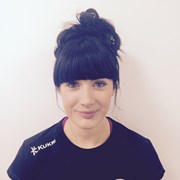Ab & Core Exercises
Why should I train abs?
When it comes to training your abdominals (abs), there are many benefits you can reap by strengthening your core. This includes:
- Everyday activities such as bending, turning and sitting might seem easy or mundane but once they become painful or difficult they're hard to ignore. A strong core helps give you the foundation and inner strength to lead the life you want.
- Modern life means we're inevitably sitting more, which can lead to numerous issues, including back pain. Regularly training your core helps improve your posture, reduce slouching and lessens the likelihood of back pain.
- Improve your performance in sports: Other body parts may be more prominent in sports such as football, golf, cycling, tennis, swimming, running or netball but the central motions for each sport originate in and are powered by one thing: a strong core.
- A strong core can help you utilise other body parts to optimal efficiency, so if you’re focusing on improving strength in other areas, it’s important not to neglect your abs.
- Whether you're standing, walking or running, maintaining your balance is an essential way to avoid injury. Having a strong core will stabilise your body giving you the freedom to move to your heart's content with minimal risk of falling.
There are four main muscles in your abs - rectus abdominis, external obliques, internal obliques and transverse abdominis. The following exercises target them all, leading to improvements in your core strength, stability and posture.
When it comes to getting a flat stomach, working the transverse abdominis is the most important. While visible abs requires a low body fat and is unlikely to be achieved through exercise alone, these muscles pull in the abs to the spine, creating a stronger core, and slimmer waist. They also help with improving posture and relieving lumbar pain.
Discover different core exercises and how to do them below.
Check out some of our other exercise guides: Arm and shoulder exercises, Back exercises, Chest exercises, Full body exercises, Glute exercises, Leg exercises

Planks are an anti-core exercise that builds core strength and stability while also working the back, glutes, and shoulders.
How To Do Planks
Sit ups strengthen the abdominals, obliques, and hip flexors by training the spine in flexion.
How To Do Sit Ups
Ab crunches isolate the abdominals and can build the strength needed for more advanced core exercises.
How To Do Crunches
V sit ups are a challenging progression to the conventional sit up, with a greater focus on the lower abs and hip flexors.
How To Do V Sit Ups
Bicycle crunches are a challenging ab crunch variation that involves rotating the trunk to further challenge the obliques.
How To Do Bicycle Crunches
Russian twists work muscles in the core, back, and hips to build core strength and stability.
How To Do Russian Twists
Butterfly sit ups train the core through a greater range of spinal flexion compared to traditional sit ups, while lightly stretching the adductors.
How To Do Butterfly Sit Ups
Reverse crunches strengthen the abdominals, obliques, and hip flexors, but place less strain on the neck and upper back than conventional sit ups.
How To Do Reverse Crunches
Toe touches have a similar movement pattern to crunches but keep the lower body off the floor to increase the challenge.
How To Do Toe Touches
Side planks are a variation of the plank where the torso and legs are rotated, increasing the challenge on the obliques.
How To Do Side Planks
The plank knee to elbow is a dynamic plank variation that involves crunching the knee towards the elbow to further challenge the abdominals.
How To Do Plank Knee To Elbow
Plank to press ups are an advanced full body exercise that combines the forearm plank with push ups.
How To Do Plank To Press Ups
Swiss ball pikes are a full body exercise that builds strength and stability in the core, shoulders, glutes, and quads, and improves hamstring flexibility.
How To Do Swiss Ball Pikes
Swiss ball circles are a variation of the plank that have increased instability, placing more demand on the core to maintain a plank position.
How To Do Swiss Ball Circles
The Swiss ball crunch is an ab crunch variation which provides a larger range of motion to further challenge the core.
How To Do Swiss Ball Crunches
The Paloff press challenges the core to resist rotation, helping to strengthen the abdominals and obliques.
How to do Pallof Press
Deadbugs challenge the core to remain stable while opposite limbs are extended, building core strength and coordination.
How to do Deadbugs
Decline sit ups are performed on a decline bench to increase the range of motion for a greater challenge.
How to do Decline Sit Ups
The ab wheel rollout is a challenging exercise that works the core, shoulders and glutes.
How To Do Ab Wheel RolloutsYour core muscles have a huge impact on your balance and stability, by building strength here you will be creating an even balance throughout your body. When you have a weak core, strength from other muscles gets used instead to compensate, which in turn could lead to injury. By choosing the correct core exercises you will not only be blasting those abs but also strengthening and engaging your pelvis, lower back and hips.
Claudia Dawe
Personal Trainer, Sheffield City Centre South
If you’re not sure whether a work out is suitable for you, please consult your doctor before you start it. If you're unsure of how to perform any of the above exercises, please ask help from a PT at your gym.